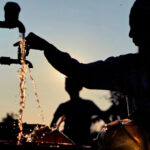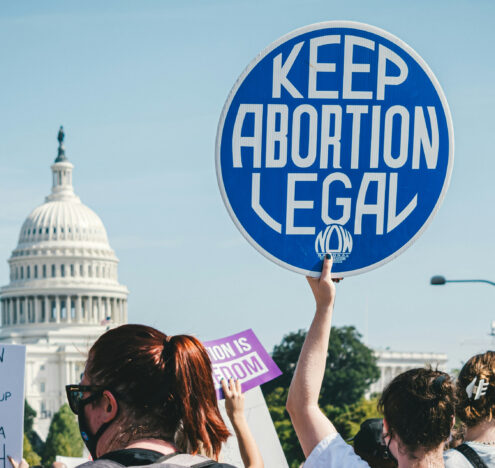Since the passage of UN Security Council Resolution 1325 (UNSCR 1325) in 2000, the international community has devoted a great deal of attention to the importance of women’s participation in peace processes. The implementation of this ideal, however, often falls short. Myanmar, where the government is currently engaged in a peace process with multiple armed ethnic groups, is a case in point. Although the parties have committed to women’s participation at the negotiation table, women’s actual inclusion in the formal process has been limited — despite evidence of women’s powerful role at the grassroots level. In an article in the Journal of Peacebuilding & Development, Mollie Pepper examines how women are involved in informal peacebuilding activities in Myanmar even if they are not present in significant numbers in the formal process.
The article finds that focusing too much on the formal peace process can unduly sideline the important work women are doing at the grassroots level. It draws on field research conducted in Myanmar and Thailand in 2017: 33 from ethnic women’s organizations and other organizations, reports or documents from these organizations, and field notes. The author argues that women are extremely active in peacebuilding in Myanmar through ethnic women’s organizations at the grassroots level and an umbrella organization called the Women’s League of Burma (WLB). Through these organizations, women “document[] human rights abuses and women’s experiences of insecurity” and, importantly, cross-ethnic differences to address common concerns.
Attention to the multiple, intersecting identities of women — especially ethnic minority women — forces us to consider those who are not even represented in Myanmar’s civil society, let alone at the formal peace table.
The author identifies four central themes in her analysis. First, there is a tension between the endorsement of international norms of women’s inclusion found in UNSCR 1325 and the implementation of these in the Myanmar peace process. The government committed to ensuring that the make-up of those participating in peace negotiations would be 30% women. Yet, no substantive action has been taken to make this a reality. Women constituted only 7% of participants at the first peace conference and 13% at the second one. Second, on a related note, women report significant barriers in accessing the formal negotiation process. Some are considered too inexperienced, not occupying the requisite positions in the armed groups or government that would provide them a place at the table. Others, however, are considered too “assertive” and outspoken, especially those who are active in the WLB or individual ethnic women’s organizations. Additionally, the broader lack of civil society participation in the peace talks deepens gender disparity, as women are very active and hold leadership positions in Myanmar’s civil society. The small number of women who do participate in the formal process tend to be siloed in the social committee of the negotiations, with very little representation in the economic, environment and land, and security committees. This “prevents women’s views and experiences from being introduced to the other sectors of the formal peace process” — much to its detriment.
Third, since their participation is limited at the formal level, women’s influence on the peace process happens predominantly through informal spaces and processes — often overlooked in analyses of the Myanmar peace process. Traditionally, women have more authority on social issues. Since they are often “penalized for stepping outside” their traditional role, women have used this particular area of authority to “assert their right to be included at the level of ethnic politics” and thereby influence the peace process. For example, women have created effective channels of influence on ethnic armed groups, convincing them to address concerns about sexual violence.
Finally, women’s ethnic organizations provide a potential model for building a diverse, inclusive peace process. Ethnic minority women interviewed explicitly celebrated diversity and discussed the ability of ethnic women’s organizations to cross lines of ethnic difference to work for common goals. Against the frequent tokenism of “women’s inclusion” — the assumption that any woman can represent all women — they underscored the importance of not only ethnic and gender diversity but also rural/urban diversity for ensuring a truly representative peace process.
CONTEMPORARY RELEVANCE
The peace process in Myanmar is ongoing, and ten ethnic armed groups have signed on to the ceasefire since in 2015. Over the same period of time, the Rohingya population in Rakhine State experienced extreme violence at the hands of the Myanmar military, with about 6,700 killed in one month (August-September 2017). The Rohingya crisis draws attention to the fact that Rohingya Muslims are not, however, among those groups recognized as official ethnicities of Myanmar, as they are officially seen as illegal immigrants from Bangladesh, despite tracing their roots in Myanmar back centuries. Attention to the multiple, intersecting identities of women — especially ethnic minority women — forces us to consider those who are not even represented in Myanmar’s civil society, let alone at the formal peace table. The status of the Rohingya people in Myanmar raises broader questions about who is considered worthy of inclusion and why. What are the limits to inclusion in otherwise inclusive peace organizations or movements?
PRACTICAL IMPLICATIONS
There needs to be a greater recognition of the peacebuilding work that women perform in informal spaces. Otherwise, we risk missing an important part of the picture, casting the spotlight on elite politics like power-sharing, economic policies, or disarmament while neglecting efforts at the grassroots level to reweave the fabric of society. This can contribute to the continued marginalization of women by overlooking their achievements and suggesting that their work is not of equal importance. Accordingly, greater attention should be given to women’s organizations and how they expose human security threats of concern to local communities and build coalitions across ethnic barriers towards common goals.
The formal peace process is of course still important, so it is essential that the broadest possible range of voices be represented there. This means moving beyond “tokenism” and really thinking through issues of representation. Can a woman of the dominant Bamar ethnic identity effectively represent the needs and concerns of women of various minority ethnic identities? Can a highly educated, urban woman in a high-ranking position effectively represent the needs and concerns of rural women who have had to flee their villages multiple times to escape fighting? Getting representation right creates a peace process that is more responsive to the actual needs of Myanmar’s citizens. One way to improve this representation is to ensure that the Myanmar peace process — and others like it — include civil society organizations, as these often provide entry points for otherwise marginalized populations. Furthermore, once diverse women are more prominently included in formal negotiation processes, the next step is to ensure that such inclusion is meaningful — and that women are not simply represented on committees seen to involve so-called “women’s issues.” For instance, the experiences and voices of diverse women are needed on security committees if parties are to fully comprehend the human toll war has taken on communities and therefore the urgency and character of the measures that must be taken to end it.
Published in collaboration with the Peace Science Digest, which summarizes and reflects on current academic research in the field of peace and conflict studies. To subscribe or download the full piece, which includes additional resources, visit their website.




















